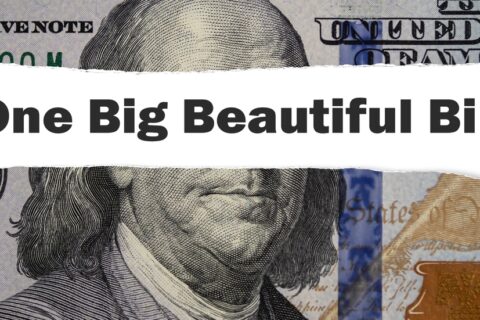On August 8, the Internal Revenue Service issued much-anticipated proposed regulations (REG-
107892-18) (“Proposed Regulations”) concerning the deduction for qualified business income under Section 199A of the Internal Revenue Code (“IRC”), recently enacted as part of the 2017 Tax Cuts and Jobs Act (“TCJA”). The Proposed Regulations will affect individuals, partnerships, S corporations, trusts, and estates engaged in domestic trades or businesses. Also, on August 8, the IRS issued Notice 2018-74, which contains a proposed Revenue Procedure that provides guidance for the computation of W-2 wages for purposes of Section 199A. The IRS posted FAQs on its website with respect to the 199A deduction and issued a news release, as well.
The purpose of the Proposed Regulations is to provide taxpayers with computational, definitional, and anti-avoidance guidance regarding the application of Section 199A. The Proposed Regulations contain six substantive sections, each of which provides rules relevant to the calculation of the Section 199A deduction. Additionally, the Proposed Regulations contain an anti-avoidance rule under Section 643 of the Code to treat multiple trusts as a single trust in certain cases.
The Proposed Regulations are what are referred to as “reliance regulations.” Reliance regulations are issued and designated by the Treasury as regulations on which a taxpayer can rely. If a taxpayer follows the Proposed Regulations and they are changed later, then, generally, the taxpayer will not be deemed to be in conflict with the later-changed and re-issued proposed regulations or differing final regulations. However, certain measures may have to be undertaken to come into compliance with the later regulations.
The total package of guidance from the IRS measures about 200 pages. While there are still unanswered questions, the Proposed Regulations address many of the issues that have concerned tax practitioners. The Proposed Regulations contain dozens of helpful examples of application of this guidance.
There are many noteworthy provisions in the Proposed Regulations. We set forth just a few of them below that may affect many of our clients.
Some service businesses escape the Specified Service Trade or Business (“SSTB”) exclusion. Income from an SSTB is not eligible for the 199A deduction, after taxpayer taxable income reaches thresholds. Section 199A includes as an SSTB a trade or business where the principal asset of such trade or business is the reputation or skill of one or more of its employees or owners. Commentators worried that the statutory language would cause good plumbers and famous chefs to be taxed as SSTBs because of their good reputations. The Proposed Regulations limit the definition of this kind of SSTB to situations where a person’s reputation, fame or name is the main product or driver of the revenue with clear delineations. The plumber and the restaurant are safe.
“Crack and Pack” sacked. One idea that was being promoted by various practitioners involved “cracking” SSTBs into various component businesses, some of which were clearly not SSTBs. For example, a law firm might split off its administrative function – not an SSTB (to be owned in the same proportion as the law firm is owned), which would charge fees as high as could reasonably be justified to the law firm – an SSTB. The Proposed Regulations ban such arrangements.
Own real estate in one entity that charges rent to a commonly-controlled SSTB entity – Nope. This is another workaround that the IRS has shut down in the Proposed Regulations.
IRS nixes the exodus of employees that remain engaged as independent contractors. The plan was to get the employees a deduction equal to 20% of their taxable income (generally) that they could not get as employees. The Proposed Regulations contain a presumption that such a person, while nominally an independent contractor and possibly legally an independent contractor, is still an employee for SSTB purposes and must be treated so, unless the presumption is otherwise rebutted.
Good News! The Proposed Regulations allow – in specific and limited circumstances – wages paid by Entity One to count as wages paid by Entity Two (but not by both). Once a certain taxpayer taxable income threshold is reached, “W-2 wages” of a trade or business figure into the computation of the Section 199A deduction. There has been significant concern by many different constituencies that, under a strict reading of Section 199A, a business entity that is a common law employer would have no W-2 wages if the wages were funded by the entity, but actually paid by another person (such as a professional employer organization or a common paymaster). In these cases, the Proposed Regulations provide rules for allowing W-2 wages borne by a business to be counted as W-2 wages by that business.
Mixed results. Winners, losers and in-betweeners in defining SSTBs. We mentioned earlier that plumbers and restaurants (and many other potential victims) escaped the “reputation and skill” trap. There are other winners.
There are losers, too. For example: veterinarians and skilled nursing facilities. For these purposes – and not many others – veterinarians are considered health care providers. Skilled nursing facilities are considered as being covered by the “health” definition of SSTBs. Assisted-living centers are not addressed. Does that mean they are not SSTBs?
Many of our clients in the wealth management business were hoping to sidestep the SSTB status. The Proposed Regulations sweep them into the SSTB dust bin.
A little bit of SSTB income does not taint a business. If a business has gross receipts of $25 million or less, the rules disregard SSTB income if it constitutes less than 10 percent of gross receipts. For a business with more than $25 million in gross receipts, the 10 percent threshold falls to 5 percent.
Good News! There are aggregation rules. Bad News! These are a whole new set of aggregation rules. Most tax practitioners are familiar with the aggregation rules under Section 469, the IRC provision that applies the passive activity loss and credit limitation rules. Aggregation rules under the Proposed Regulations can help the law and taxpayers address economic realities, rather than artificial business structures. However, the Proposed Regulations may cause the taxpayer to have to apply two sets of burdensome aggregation rules.
When does a rental activity rise to a trade or business and become eligible for the 199A deduction? Who knows? The Proposed Regulations simply say that the business must rise to a level of a Section 162 trade or business. Over 100 years of case law have not settled the issue of what is a Section 162 trade or business. Neither do the Proposed Regulations.
Form multiple trusts and get multiple 199A deductions? Not so fast. The proposed Section 1.643-1 regulations double down on some existing law that forbids the same grantors creating multiple trusts for the same beneficiaries with tax avoidance as a principle purpose. While these proposed regulations do not change the existing standards much, they fire a shot across the bow of bold Section 199A tax planners.
These issues and many more must be addressed by taxpayers in order to comply with the TCJA and these new Proposed Regulations. The Proposed Regulations make tax planning and tax compliance clearer and somewhat more constrained.
While exhausting, this presentation is not meant to be exhaustive. In order to understand how these new Proposed Regulations and the TCJA affect you and your businesses, please contact a HM&M tax adviser.
Latest Blog
Cash and noncash donation deductions in 2026 The new year brings changes that affect how taxpayers think about ...
Everyone should have an estate plan — including single people with no children. For married couples, the law ...
The One Big Beautiful Bill Act (OBBBA), signed into law in July 2025, restored the more favorable pre-2022 ...
HM&M Updates
Dallas, TX – Aug. 7, 2024 – HM&M, a Springline company (HM&M), a leading CPA firm with four ...
DALLAS, Dec. 11, 2024 – Springline Advisory, a trailblazing financial and business advisory firm, is proud to announce its partnership ...
Last month, Senior Manager, Pearl Balsara was invited to speak at the 2023 FPA DFW Annual Conference in ...










